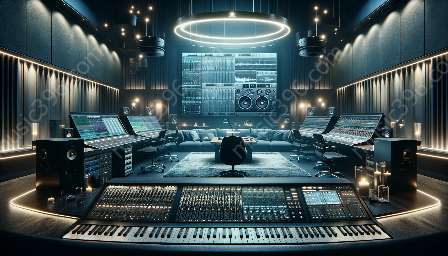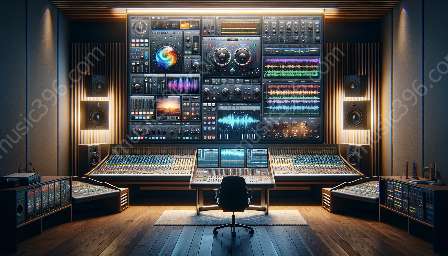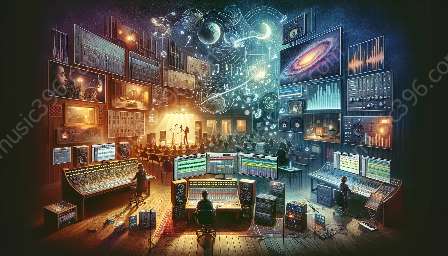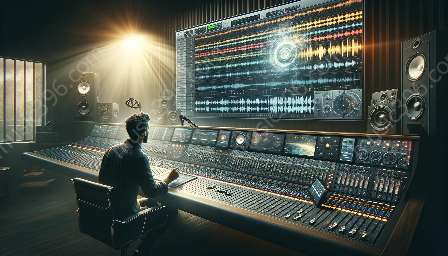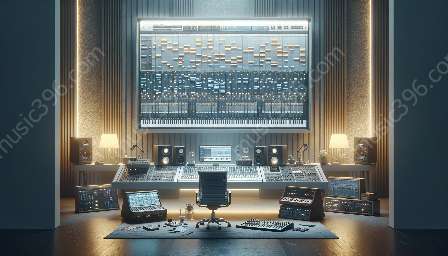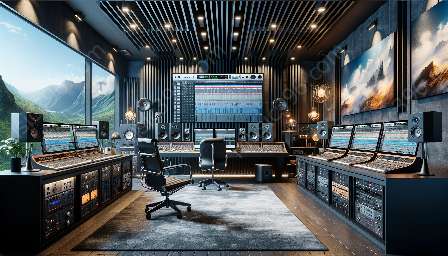Audio synthesis and sampling integration is a complex and dynamic field at the intersection of music production, sound design, and digital audio technology. It involves the synthesis of new audio content and the integration of pre-recorded samples to create unique and diverse sonic experiences. This topic cluster will delve into the concepts and techniques of audio synthesis and sampling, focusing on their integration with digital audio workstations (DAWs) and the creative possibilities they offer.
An Overview of Audio Synthesis and Sampling
Audio synthesis is the process of generating new sound using electronic devices or software. It involves manipulating various parameters such as oscillators, filters, envelopes, and modulators to create complex waveforms and timbres. On the other hand, audio sampling involves capturing and reusing segments of existing audio recordings to create new musical compositions or soundscapes.
With the advancements in digital technology, audio synthesis and sampling have evolved significantly, offering musicians, producers, and sound designers powerful tools to sculpt and manipulate sound in innovative ways. The integration of these two techniques has greatly expanded the sonic palette available to creators, enabling them to blend the realism of sampled instruments with the boundless creativity of synthesized sounds.
Compatibility with Digital Audio Workstations (DAWs)
Digital audio workstations are software applications used for recording, editing, and producing audio files. They provide a platform for integrating audio synthesis and sampling, allowing users to manipulate, arrange, and layer different types of sounds within a single project. DAWs offer a range of tools and features that facilitate seamless integration with both synthesized and sampled audio content.
One of the key capabilities of DAWs is their ability to host virtual instruments and synthesizers, which are essential for building and shaping synthesized sounds. Additionally, DAWs provide robust support for sample libraries and have advanced features for mapping, editing, and processing sampled audio, making them an ideal environment for working with a rich variety of sound sources.
Understanding Audio Sampling in DAWs
When it comes to audio sampling in DAWs, it involves the process of importing, editing, and manipulating audio samples within the DAW environment. This may include slicing and arranging samples, applying effects and processing, and integrating sampled elements with other audio tracks and virtual instruments.
Modern DAWs offer comprehensive sample editing tools, timestretching and pitch-shifting capabilities, and seamless integration with third-party sample libraries and hardware samplers. These functionalities empower users to experiment with different sample-based techniques, such as granular synthesis, sample manipulation, and creative rearrangement of audio material to enrich their music productions.
Tools for Audio Synthesis and Sampling Integration
Several software instruments and samplers have become popular choices for audio synthesis and sampling integration within DAWs. Virtual synthesizers like Serum, Massive, and Omnisphere have gained widespread recognition for their advanced sound design capabilities, offering a wide range of wavetables, modulation options, and complex synthesis techniques.
On the sampling front, dedicated samplers such as Kontakt and Ableton Live’s Simpler and Sampler instruments provide flexible and intuitive platforms for working with sampled audio. These tools offer comprehensive sample manipulation options, including time-stretching, slicing, and sophisticated modulation and effects processing.
Creative Possibilities and Techniques
The integration of audio synthesis and sampling in DAWs opens up a world of creative possibilities for musicians and producers. By blending synthesized and sampled elements, artists can create rich, textured sounds that transcend the limitations of traditional instruments. This fusion enables the exploration of hybrid sounds, immersive soundscapes, and unique timbres that can elevate a musical composition to new heights.
Furthermore, the integration of audio synthesis and sampling allows for the application of various sound design techniques, such as layering, modulation, and convolution processing, to craft intricate and expressive sonic landscapes. This integration also facilitates the creation of dynamic and evolving sound textures that evolve over time, adding depth and character to the music.
Conclusion
Audio synthesis and sampling integration in DAWs represent a fusion of traditional and modern sound production techniques, offering a vast playground for sonic exploration and creativity. The seamless compatibility of these techniques with digital audio workstations empowers producers and musicians to harness the full potential of synthesized and sampled sounds, driving innovation and pushing the boundaries of musical expression.
As the landscape of music production continues to evolve, the integration of audio synthesis and sampling in DAWs will continue to play a pivotal role in shaping the sonic landscape of the future.

